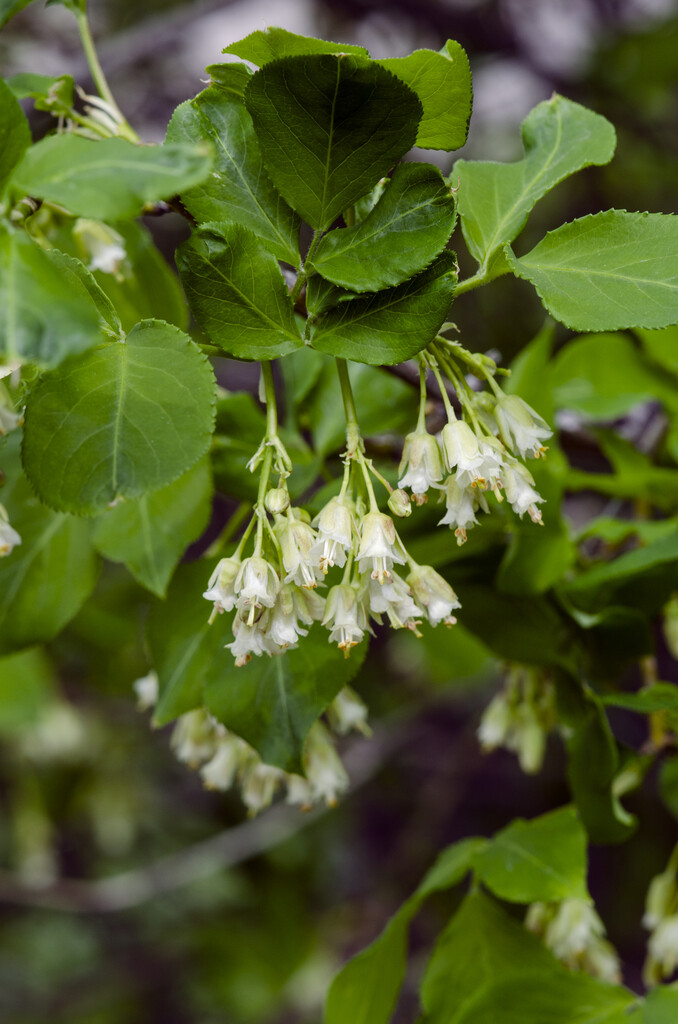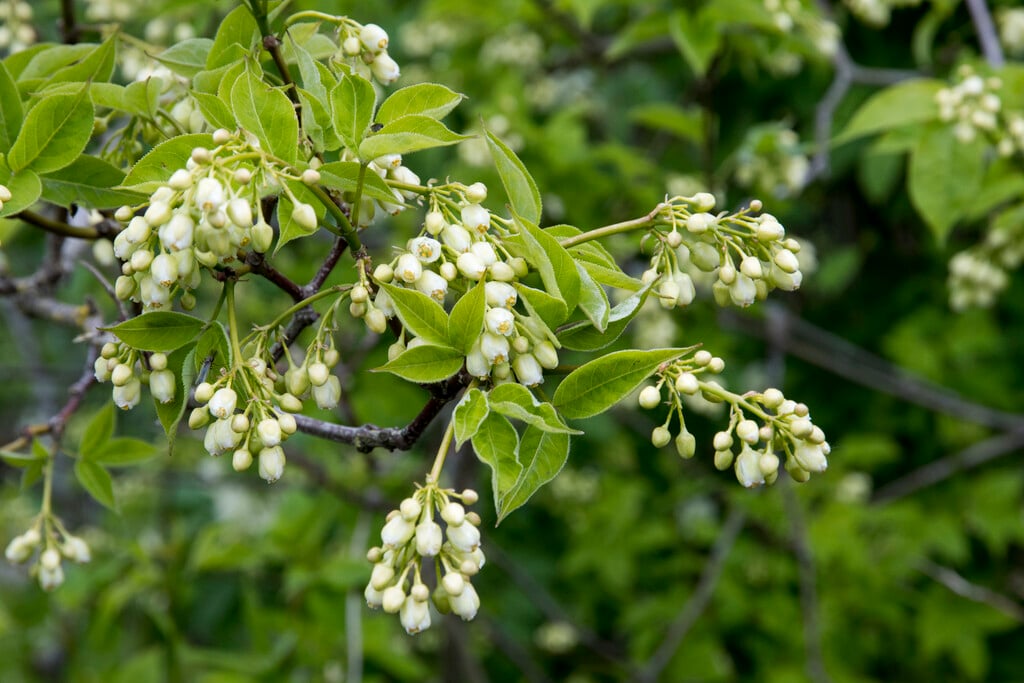Staphylea trifolia
American bladdernut
A spreading, deciduous shrub to 4m tall, with dark green, pinnate leaves composed of three finely-toothed leaflets, downy beneath. The foliage turns yellow in autumn. In spring it bears creamy white flowers in pendent clusters; these are followed by papery, 6cm long, inflated seed pods that mature from yellow-green to brown
Size
Ultimate height
2.5–4 metresTime to ultimate height
10–20 yearsUltimate spread
2.5–4 metresGrowing conditions
Moisture
Moist but well–drainedpH
Acid, Alkaline, NeutralColour & scent
| Stem | Flower | Foliage | Fruit | |
| Spring | Cream White | Green | ||
|---|---|---|---|---|
| Summer | Green | Green Yellow | ||
| Autumn | Green Yellow | Brown | ||
| Winter |
Position
- Full sun
- Partial shade
Aspect
East–facing or North–facing or South–facing or West–facing
Exposure
Sheltered Hardiness
H6Botanical details
- Family
- Staphyleaceae
- Native to GB / Ireland
- No
- Foliage
- Deciduous
- Habit
- Bushy
- Genus
Staphylea are deciduous shrubs or small trees producing hanging clusters of bell- or cup-shaped, white, cream or pink flowers, followed by bladder-like, two- or three-lobed fruit
- Name status
Correct
- Plant range
- E North America
How to grow
Cultivation
Grow in any moist but well-drained soil in full sun or partial shade
Propagation
Propagate by sowing seed in containers in a cold frame in autumn. Take greenwood cuttings in early summer or semi-ripe cuttings in midsummer, both with bottom heat
Suggested planting locations and garden types
- Architectural
- Low Maintenance
Pruning
See pruning group 1 or 2
Pests
Generally pest-free
Diseases
Generally disease-free
Love gardening
Sign up to receive regular gardening tips, inspiration, offers and more
View our Privacy Policy
Get involved
The Royal Horticultural Society is the UK’s leading gardening charity. We aim to enrich everyone’s life through plants, and make the UK a greener and more beautiful place.

